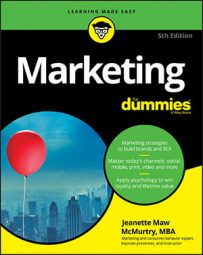Here’s a list of simple and quick actions you can take to build customer loyalty and grow sales by working on your product:
- Update the appearance. Many companies present good products to the world in poorly designed exteriors that don’t dress those products for success. Look at the product itself. Do the colors, aesthetics, and shapes appeal to your top consumers? Is your brand name visible in an appropriate manner? In a world where minimalism is big, can you streamline your product to be smaller, to take up less space, and to be more efficient?
- Rethink the packaging. Most often, refreshing the look of your packaging is easier than updating the look of your product. If you want to increase your prices, change your packaging to make it look like it’s worth the new price tag. Adding “Improved Formula” seems to work for many consumer goods. Always make sure your new packaging adheres to the ESP you’ve developed and uses the colors you’ve selected to project your brand’s best and most relevant attributes. Highlight your best features and achievements, such as “98% of our customers refer friends,” on your packaging, too. Using recycled packaging materials makes customers of all generations feel better about purchasing from you, so consider this as often as you can.
- Make sure the product is attractive and easy to use. Your product should also feel nice — smooth, polished, soft, or whatever texture is appropriate to the product’s use. Tactile experiences add value to the product even in today’s digital world. Even minor changes in your product’s look, feel, and function can improve its appeal and customer satisfaction.
- Refresh any printed materials that come with the product. Can you improve their appearance? Dress them up? Make them clearer or more useful? Whatever you do, make sure these printed materials instill pride of ownership in the product. A professional, attractive web page should also support the product.
- Choose your product’s best quality. Coin a short phrase to communicate your ESP and put that phrase in prominent places on the product, its packaging, and its literature. If you don’t want to throw out a large inventory of boxes in your warehouse, you can communicate your new features or advantages with stickers.
- Eliminate confusion about which product does what for whom. If you have more than one product, or variations for different segments you serve, clarify the differences and uses of your products by pricing and naming them distinctly (to make them obviously different). You’d be amazed how confusing most product lines look to the average buyer.

